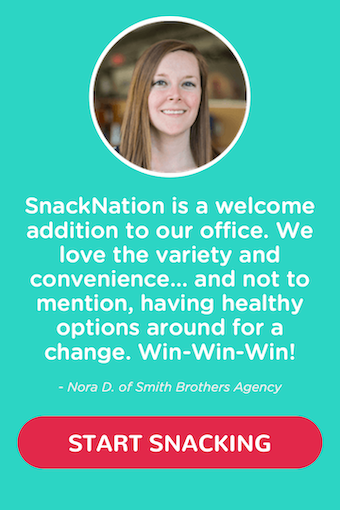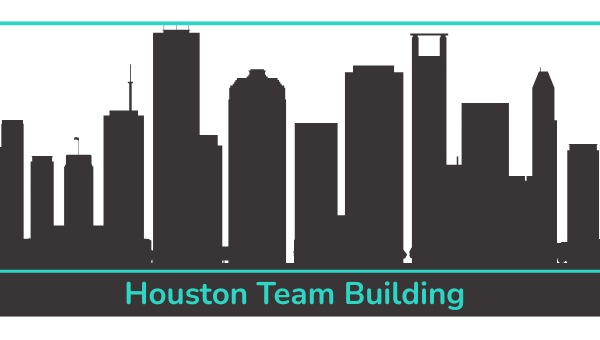Employee retention often hinges on how well a company supports their staff’s overall well-being.
In North America, around fifty percent of businesses recognize this and offer well-being programs, which many employees see as essential when deciding where to work.
 Good health IS good business – Paul Drechsler, CEO (Wates Group Limited) Share on X
Employee well-being comes in various forms, catering to different needs—whether your employees are looking to enhance their physical health through diet and exercise, seeking to unwind with social support services, or requiring mental health resources. Providing a program that meets these desires is crucial.
Good health IS good business – Paul Drechsler, CEO (Wates Group Limited) Share on X
Employee well-being comes in various forms, catering to different needs—whether your employees are looking to enhance their physical health through diet and exercise, seeking to unwind with social support services, or requiring mental health resources. Providing a program that meets these desires is crucial.
Explore our curated selection of the most sought-after programs that significantly elevate employee well-being. Transform your workplace into a thriving environment and see remarkable improvements in team performance and satisfaction.
Get ready to start with your employee wellness initiative today!
What Are Employee Well-Being Programs?

It’s important to understand the importance of workplace wellness and its impact on productivity and cost.
Employee well-being programs are organizational strategies designed to support the overall health, happiness, and job satisfaction of employees. These programs often encompass a variety of initiatives, such as health screenings, fitness activities, mental health resources, and flexible work arrangements.
The goal is to create a supportive workplace environment that fosters physical, mental, emotional, and financial health, which can lead to increased productivity, reduced absenteeism, and improved morale among the workforce.
Pro-Tip: Begin by discovering your employees’ needs through an employee wellness survey, which will provide insights into key focus areas.
Employee Well-Being Programs
1. Mental Health Days Off

Taking employee mental health seriously is essential. Sometimes, a day off is the ideal solution when external pressures become overwhelming. It’s a common experience, and offering three to six mental health days annually, no questions asked can significantly support employees in managing their well-being.
❤️ Why we love this employee well-being program: It goes beyond the focus on mental health during awareness months, actively supporting employees throughout the year. Employees can count on their employer for the support they need, including taking a day off when necessary.
👉 Real-life Example:
🚀 How to get started: Get started by establishing a policy outlining the request process, conditions, and annual limits for paid or unpaid mental health days.
2. On-site Wellness Workshops

Bring in on-site practitioners such as nurses or physical therapists to screen for health risks.
These professionals can provide health screenings, vaccinations, and risk assessments, offering a form of preventative care to maintain good health. This initiative supports employees’ fitness and health objectives by providing essential biometrics.
❤️ Why we love this employee well-being program: Instead of employees needing to take time off to see a doctor, critical health metrics like blood pressure can be conveniently monitored at work, saving time and promoting continuous health management.
👉 Real-life Example:

🚀 How to get started: Refer to your state government’s regulations on worksite wellness which outline the steps to initiate an employee wellness program.
3. Fitness Challenges with a Twist

Companies are embracing creative wellness challenges to boost employee morale and encourage team bonding through enjoyable health-focused activities. These initiatives are not just about fun; they aim to motivate sustainable healthy behaviors.
Popular options include the traditional 10k-a-day step challenge, scavenger hunts, “Wellness Wednesday“, dance-offs, and family sports days, as well as offering gym memberships.
❤️ Why we love this employee well-being program: Engaging in lively physical wellness challenges with colleagues boosts morale, helps build stronger connections and brings employees closer to their fitness goals over time.
👉 Real-life Example:
🚀 How to get started: Kick off your fitness challenge by sending out an e-invitation to gauge interest and select the type of challenge. To effectively track progress, consider integrating a fitness app.
4. Mindfulness and Meditation Rooms

Creating a dedicated room for meditation and mindfulness offers employees a private space to decompress from stressful situations and rejuvenate. Furnish it with calming elements like candles, comfortable seating, soft lighting, and floor cushions.
This space can offer a much-needed five-minute break after a productive work hour or an alternative to a smoke break. Stock the room with wellness gifts that employees can share, enhancing the sense of community.
❤️ Why we love this employee well-being program: Providing tranquil spaces like these helps alleviate stress, promote relaxation, and boost employee engagement.
👉 Real-life Example:
🚀 How to get started: Post a sign on a conference room door to designate meditation hours throughout the day.
5. Flexible Working Hours and Sabbaticals

Offer flexible working arrangements if they align with your organization’s capabilities, enhancing work-life balance for employees. Options include flexible scheduling, compressed workweeks where employees work longer days but fewer days each week, and options for remote work. For long-tenured employees, consider offering sabbaticals as a significant reward after reaching certain milestones.
❤️ Why we love this employee well-being program: While it might not be feasible for every organization, this program allows employees to tailor their work schedules to fit their unique lifestyles, promoting greater job satisfaction and productivity.
👉 Real-life Example:

🚀 How to get started: Initiate a pilot phase for the flexible work policy to evaluate its effectiveness and make necessary adjustments before a full rollout.
6. Financial Wellness Programs

Offer your employees the tools for financial stability by providing access to comprehensive financial planning services. These include workshops on budgeting, debt management, retirement planning, and tax preparation. By enhancing financial literacy and management skills, these programs help alleviate the stress associated with financial difficulties.
❤️ Why we love this employee well-being program: Gaining control over finances is a crucial part of well-being. And although being rich doesn’t necessarily make someone happy, struggling financially surely will harm someone’s well-being.
👉 Real-life Example:
 🚀 How to get started: Assess your company’s needs and explore financial wellness programs that align with your organizational goals.
🚀 How to get started: Assess your company’s needs and explore financial wellness programs that align with your organizational goals.
7. Add Plants and Natural Light Where You Can

Introducing plants and natural light into the workplace is a simple yet powerful way to enhance employee well-being. Studies have shown that workplaces that incorporate natural elements like greenery and sunlight can significantly reduce stress and boost mood and productivity.
The presence of plants in the office can improve air quality, while natural light helps regulate our natural sleep rhythms and increase vitamin D levels, all contributing to better overall health.
❤️ Why we love this employee well-being program: Adding plants and maximizing natural light doesn’t just make the office look more vibrant and welcoming; it also fosters a healthier, more energizing environment that can lead to improved mental well-being.
👉 Real-life Example:

🚀 How to get started: Start by assessing your workspace for areas that could benefit from more natural light and consider adding a variety of indoor plants.
8. Pet-Friendly Workplace

Allowing pets in the office creates a homier atmosphere and encourages interactions among colleagues that might not occur otherwise. It’s a refreshing break from the routine that can lead to increased creativity and productivity, with studies showing that the presence of pets can lower stress levels and boost emotional well-being in the work environment.
❤️ Why we love this employee well-being program: Having pets around can lighten the mood and reduce the feelings of isolation or high pressure that often accompany intense work environments.
👉 Real-life Example:
🚀 How to get started: Consider introducing a “Pet Day” as a trial to evaluate feedback and readiness for a more regular arrangement.
9. Volunteering Time Off (VTO)

Volunteering Time Off (VTO) is a program that empowers employees to take paid time off from work to volunteer for charitable causes or community initiatives.
By offering VTO, companies demonstrate their commitment to social responsibility and the well-being of their employees, promoting a culture that values giving back and encouraging personal fulfillment beyond the workplace. This initiative enables employees to support causes they care about while balancing their professional commitments.
❤️ Why we love this employee well-being program: It offers employees a break from their usual work routine while promoting a sense of purpose and community engagement.
👉 Real-life Example:

🚀 How to get started: Begin by defining clear guidelines and identifying partnership opportunities with local nonprofits
10. Sleep Health Programs

Sleep health programs are increasingly popular in the landscape of employee well-being initiatives, recognizing the crucial role that rest plays in overall health and productivity.
These programs typically offer resources and tools to help employees adopt better sleep habits, such as seminars on sleep hygiene, access to sleep-tracking devices, and personalized coaching for those struggling with sleep-related issues. By addressing sleep health, companies aim to enhance employee focus, decrease absenteeism, and improve overall job satisfaction.
❤️ Why we love this employee well-being program: This initiative acknowledges the critical connection between quality sleep and employee performance and actively equips individuals with the tools and support they need to improve their sleep habits.
👉 Real-life Example:
I’ve spent almost 20 years optimizing my sleep.
Today, my sleep score hits 90+ most of the nights.
If you don’t get 8 hours of sleep every night, this thread will save you 🧵 pic.twitter.com/tooycb1OQg
— Sean Kelly (@seanpk) April 23, 2024
🚀 How to get started: Explore resources like educational seminars and personalized coaching to kickstart your employees’ journey towards improved sleep health.
11. Healthy Meal Options

Offering access to nutritious foods at either no cost or an affordable rate can significantly enhance employee well-being. Rather than indulging in sugary junk foods, which are all too common in workplace settings, encouraging the consumption of snacks aligned with health education principles can notably uplift mood and overall health.
❤️ Why we love this employee well-being program: By offering options that are both nourishing and satisfying, employees are more likely to make healthier choices throughout the day, leading to sustained energy levels and better overall health.
👉 Real-life Example:

🚀 How to get started: Kickstart with a snack box delivery service for easy access to wholesome snacks.
12. Organize a Lunch-Time Walk

Encourage employees to boost their cardiovascular health by organizing lunchtime walks. This initiative offers a dual benefit of physical activity and social interaction, fostering a sense of camaraderie among colleagues. It’s inclusive too, as it accommodates individuals of various age groups due to its low-impact nature.
❤️ Why we love this employee well-being program: This employee well-being program is a win-win. It promotes both physical wellness and team bonding. By incorporating exercise into the workday routine, it not only enhances health but also cultivates a positive workplace culture centered around mutual support and well-being.
👉 Real-life Example:
Taking a walk on my lunch break enjoying this gorgeous day ❤️ pic.twitter.com/ZEwEvtDeWD
— Leasa (@lfishgirl67) April 9, 2024
🚀 How to get started: Simply designate a meeting point and time, then invite colleagues to join in for a revitalizing midday stroll.
13. On-site Childcare

On-site childcare services provide working parents with a convenient solution, alleviating the logistical challenges of external daycare.
This setup saves time in the morning by eliminating drop-off routines and allows parents to remain close to their children throughout the day, fostering a better work-life balance. Consequently, employee productivity can increase, and absenteeism may decrease as parents can focus more on work without worrying about childcare arrangements.
❤️ Why we love this employee well-being program: This initiative stands out for its cost-effective and practical approach, offering families a valuable perk that supports their professional and personal lives simultaneously.
👉 Real-life Example:

🚀 How to get started: Initiate discussions with childcare providers or consider setting up a dedicated space within the workplace to implement on-site childcare services.
14. Professional Growth Support

Invest in employees’ professional development through mentorship programs, access to courses, and seminars that enhance their skills and career progression. Furthering their education, provides future incentives, and nurtures a supportive culture of growth.
❤️ Why we love this employee well-being program: By prioritizing the professional development of your team, the competency and capability of your organization thrive progressively.
👉 Real-life Example:
 🚀 How to get started: Start by exploring mentorship programs and access to relevant courses, and fostering a culture of continuous learning within your organization.
🚀 How to get started: Start by exploring mentorship programs and access to relevant courses, and fostering a culture of continuous learning within your organization.
15. Annual Retreats

Corporate getaways offer employees the opportunity to discover new facets of each other, recharge their energy, and enjoy themselves. These getaways create lasting memories through team-building challenges and collaborative endeavors. They often take place in unique destinations, adding an element of novelty and excitement.
❤️ Why we love this employee well-being program: Annual getaways resemble educational field trips in the corporate world. They provide avenues for learning, entertainment, and overall enjoyment.
👉 Real-life Example:
🚀 How to get started: Begin by selecting a diverse range of destinations and activities to cater to various interests within the team.
Key Components of an Effective Employee Well-Being Program

An effective employee well-being program is crucial for fostering a healthy, engaged, and productive workforce. Here are five key components that are essential for such a program:
✅ Physical Health Support
This includes gym memberships, fitness challenges, health screenings, and nutritional counseling.
✅ Mental Health Resources
Programs should offer counseling, therapy sessions, stress management workshops, and mindfulness apps.
✅ Financial Wellness
Offering resources for financial planning, retirement savings plans, debt management assistance, and access to financial advisors can significantly reduce employees’ financial stress and increase their overall satisfaction and stability.
✅ Work-Life Balance
Supporting work-life balance with flexible working hours, remote work options, and ample paid time off helps employees manage their personal and professional lives more effectively.
✅ Employee Engagement and Social Support
Initiatives like team-building activities, social events, and peer support groups enhance workplace culture and employee connectivity.
✅ Professional Development and Career Growth
Providing training, workshops, mentorship, and clear career progression paths fosters employee growth and satisfaction.
Benefits of Employee Well-Being Programs

👉 For Employees
- Mind and Body Health: Employee well-being programs play a pivotal role in improving both physical and mental health. These programs provide easy access to crucial health resources right at the workplace, helping employees overcome health issues and maintain overall well-being
- Career Advancement: Ambitious employees are eager for opportunities to advance their careers. Well-being programs that include professional development and career growth opportunities are highly attractive, enabling individuals to progress and succeed within the company.
- Social Connections: Spending eight hours a day in an environment with minimal interaction can be isolating. Well-being programs that encourage team bonding and incorporate social activities not only make the workplace more enjoyable but also foster a sense of community and teamwork.
👉 For Employers
- Lower Healthcare Costs and Absenteeism: Healthy employees are generally present and require less medical care, which can significantly reduce healthcare expenses and absenteeism. Proactive health and wellness initiatives lead to a healthier workforce, decreasing the frequency and duration of sick leaves.
- Reduced Turnover and Stronger Talent Retention: Wellness programs make an organization more attractive to skilled professionals looking for workplaces that support their personal and professional growth. Such programs enhance the quality of life at work, improving employee satisfaction and retention.
- Greater Productivity: When employees are less stressed about health, financial, social, or family concerns, they can focus better on their tasks. Well-being programs help employees manage these life aspects effectively, preventing them from becoming overwhelming. This proactive approach allows employees to concentrate on their work, boosting overall productivity.
Implementing a Successful Employee Well-Being Program

👉 Step 1: Assessing Your Needs
Whether you run an office whose workers could benefit from a weekly walking challenge, or you run a hospital wing whose workers could relax more socially, you want to find which well-being programs would benefit your employees the most. Try sending out an email questionnaire or survey with a list of all programs.
👉 Step 2: Planning and Resource Allocation
All of these programs we have listed require planning and resource requirements, although the walking challenge is particularly resource-light.
Wellness plan templates are excellent at implementing this. In-house healthcare clinics need to be planned far in advance. Ensure a budget for the plants in the meditation room. Price out the healthy food options. Alter the scheduling method when switching to flexible work schedules, By making these adjustments, you can ensure the program will be in budget and will continue to function.
👉 Step 3: Execution
Give employees a clear explanation of the program and what it entails for the future, so they know where and when to go to participate. Execute the program with energetic leadership, and even participate yourself. Leaders who take part in programs themselves convey the company’s alignment with the program values.
👉 Step 4: Evaluation and Adaptation
Check-in on the program every couple of weeks to determine how it’s going. Is it staying within budget? Is it going smoothly, or is it facing unforeseen obstacles? Evaluate with either the project lead or the participants. Either the program is not working out, needs some modifications, or is going perfectly as planned.
People Also Ask These Questions About Employee Wellbeing Programs
Q: Why is an employee well-being program important?
- A: Employee well-being programs are crucial because they directly contribute to the physical, mental, and financial health of employees, which in turn affects their productivity and satisfaction at work. These programs help reduce healthcare costs, improve job satisfaction, and enhance work-life balance, which can lead to a more engaged and motivated workforce. Additionally, such programs can help attract and retain top talent, as they signal that an organization cares about its employees’ holistic well-being.
Q: What are common challenges when implementing well-being programs?
- A: Common challenges in implementing well-being programs include securing adequate funding and resources, achieving employee engagement and participation, integrating these initiatives seamlessly into the existing corporate culture, and addressing the diverse needs of all employees. Another significant challenge is overcoming skepticism about the effectiveness of these programs, both from management and staff.
Q: How do you measure the success of an employee well-being program?
- A: The success of an employee well-being program can be measured through several metrics such as participation rates, employee satisfaction surveys, healthcare cost analysis, absenteeism rates, and productivity levels. Additionally, qualitative feedback from employees about their physical and mental health improvements and their overall job satisfaction can provide valuable insights into the program’s impact.
Q: Are employee well-being programs customizable?
- A: Yes, employee well-being programs are highly customizable. They can be tailored to meet the specific needs of an organization’s workforce, considering factors like industry type, company size, and demographic diversity. Customization allows companies to address the most pressing issues faced by their employees, making the programs more effective and engaging.
Q: How do employee well-being programs impact company culture?
- A: Employee well-being programs have a profound impact on company culture. They promote a culture of health and wellness, underscore the company’s commitment to its employees’ holistic well-being, and enhance social connections among workers. This can lead to increased employee morale, better teamwork, and a more supportive and inclusive workplace environment. Overall, these programs help cultivate a positive and caring company culture, which is essential for long-term organizational success.






